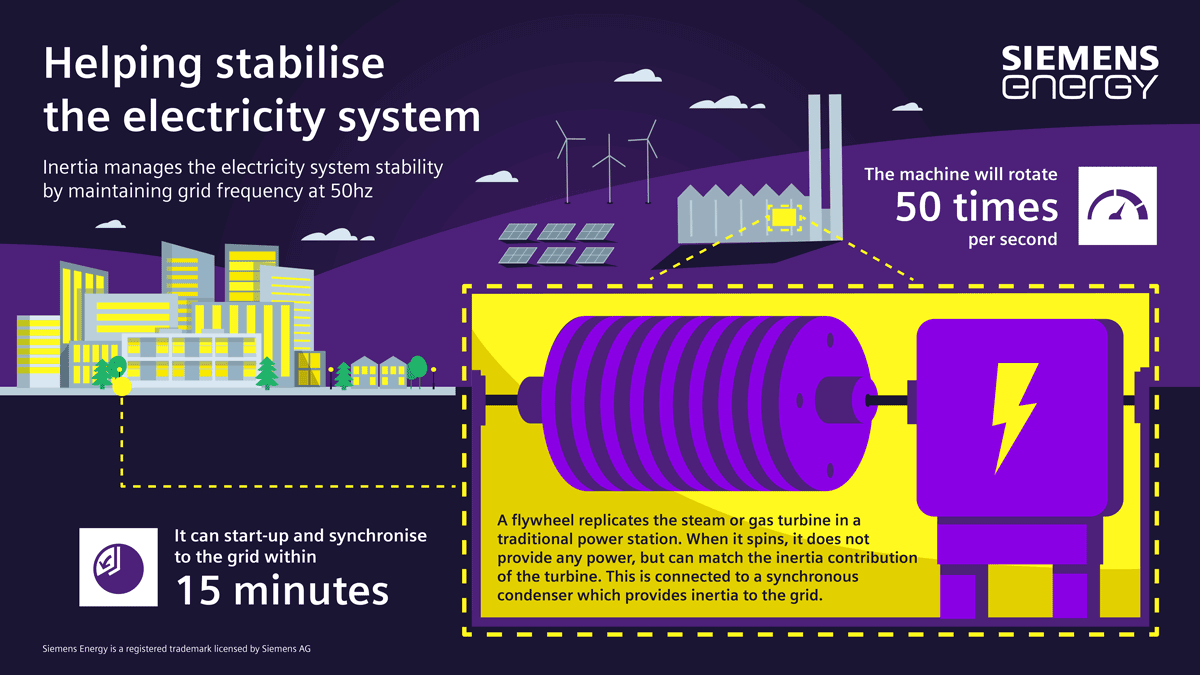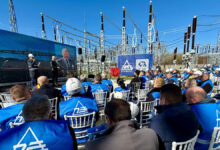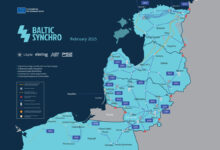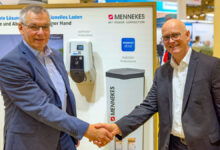Siemens Energy to Deliver Grid Stability Technology at UK Power Station Sites
Uniper has appointed Siemens Energy to deliver the rotating grid stabilisation technology that will enable Uniper to provide dedicated grid stability services to the British electricity system operator National Grid ESO at its facilities in Killingholme, Lincolnshire and Grain, Kent.
This follows Uniper being awarded four six-year contracts by National Grid ESO earlier this year, to provide inertia services and voltage control to the grid under phase 1 of its Stability Pathfinder.
Siemens Energy will be responsible for installing and commissioning synchronous condenser units at both facilities. Two steam turbine generators will be repurposed, and flywheels installed at the Killingholme site; and two new synchronous condenser units will be built on the site of the old oil-fired power station at Grain. These units will be connected to the existing grid connections at each site.
The services provided by Uniper through this innovative solution will make an important contribution by keeping the power system stable and our electricity supply at the required frequency as more renewable generation comes online.
Traditionally, inertia has been provided as a by-product of generating electricity at thermal power stations with large synchronous spinning generators. However, as many of these facilities reach retirement, the job of managing grid stability has become more challenging for National Grid ESO, as renewable generation is not connected to the grid in the same way and cannot provide inertia.
Working together with Siemens Energy, Uniper has developed a custom designed solution for each of its facilities that will provide the same grid stabilising services to National Grid ESO without the need to generate power – this is a significant step forward in helping to deliver a net zero future for the UK.
“I’m delighted that we’ve be able to work closely with Siemens Energy to create a bespoke solution that meets the needs of National Grid ESO, and which is the right fit for our Killingholme and Grain facilities. The services provided by Uniper will make an important contribution in supporting the energy transition by maintaining grid stability and security of supplies whilst enabling more renewables to be integrated into the energy system. Creating these innovative solutions based at our sites, puts Uniper at the forefront of this market, demonstrating our ongoing commitment to meeting the challenge of a zero-carbon future,” Mike Lockett, Uniper UK Country Chairman and Group Chief Commercial Officer Power, commented.
“Great Britain is leading the way in integrating renewable power to replace fossil-based generation to decarbonise its electricity system. To go further, we will need to see more projects, like these, which enhance grid stability, and will ultimately enable the net zero goal to be achieved,” Steve Scrimshaw, Vice President, Siemens Energy Ltd UK&I, said.
Uniper will be the biggest provider of dedicated inertia and voltage control and will deliver services at both Killingholme and Grain up to 2026.
Following this initial success, Uniper will continue to seek further opportunities to utilise its assets, engineering, and market expertise in this fast-developing sector of the energy transition.
Work to build the synchronous condenser units at both facilities is due to start later this year with contracted services to begin from 2021.
“The GB electricity system is one of the most advanced in the world, both in terms of reliability and the levels of renewable power. We’re really excited to be building on that and see Siemens Energy and Uniper deliver another development in our Stability Pathfinder programme. Contracts and technologies such as these are cheaper and greener, helping us as the system operator to reduce emissions and save money for electricity consumers – a huge step forward in our ambition to be able to operate the GB electricity system carbon free by 2025,” Julian Leslie, Head of Networks and Chief Engineer at National Grid ESO stated.
The National Grid Electricity System Operator (NGESO) must maintain the electricity system at 50 Hz in order to keep power supplies secure. In the UK, electricity is generated at power stations at the same frequency. Rapid changes in the frequency of electricity can create instability in the system if demand for power exceeds supply, or there is too much power being supplied to the system. If this breaches a certain limit, this can cause equipment and domestic appliances to disconnect or be damaged, as well as power cuts. Inertia in the energy system slows down the rate at which frequency changes, helping the grid to remain stable at the right frequency and voltage level. The more inertia in the system, the slower the change in frequency, which gives the grid operator more time to react and manage system stability effectively.
As we move towards a net zero future and more of our electricity is generated from renewable sources, one of the challenges for the energy system operator is how to replace the inertia services that are, in the main, provided as a by-product of thermal generation. The new and repurposed synchronous condenser units at Killingholme and Grain will consist of a large piece of spinning machinery which connects to the grid but doesn’t generate any power. Instead, the mass of the generator, connected to a flywheel rotating 3,000 times per minute, retains kinetic energy, known as inertia, in the electricity system, which helps the grid remain stable at the right frequency and voltage level.







